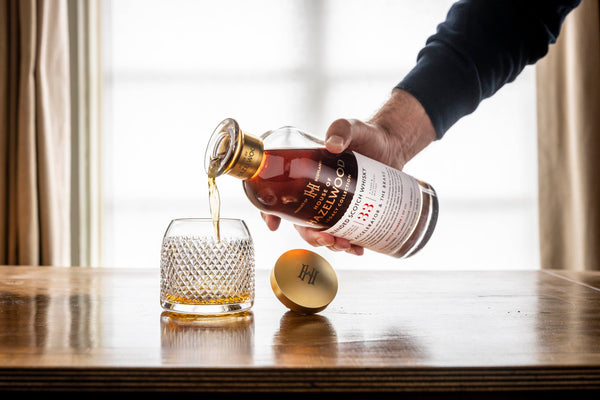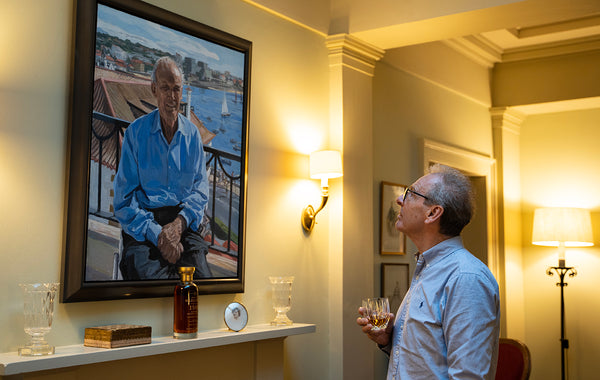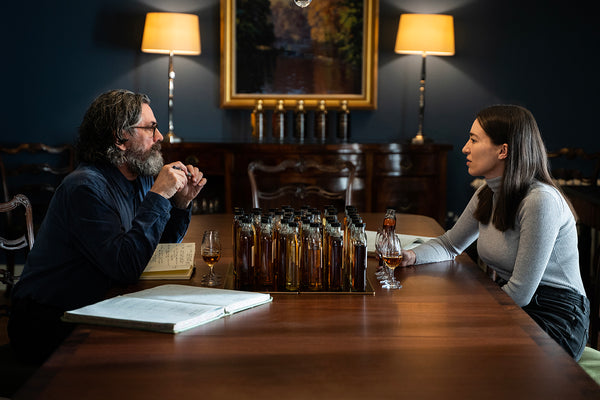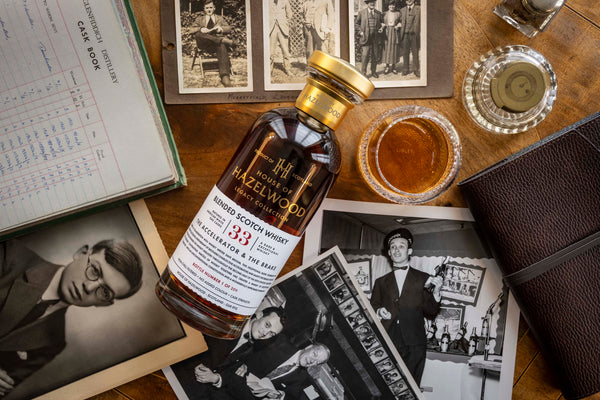How did The Accelerator and The Brake Scotch Whisky come to be? Whisky writer and narrator of the documentary, Dave Broom, grants us an inclusive insight into the process behind the blend.
It was sitting in the garden of Hazelwood House at the launch of the range, glass in hand, that the idea started to form. The drams were fascinating, varied. Different in age, style, flavour, the only link between them was that they were drawn from ‘family stocks.’ A secret finally being released. It was an intriguing, oblique take on the standard whisky launch. There was no single distillery, they were, mostly, blends, each expression different, there was no house style. What then tied them together?
It struck me that the link to the House of Hazelwood was Hazelwood House itself. That this private family home, this retreat from the business world where adults could chat and entertain, and children could play might hold the key. If there was a unity to House of Hazelwood it lay here and in the people who lived here. The family.

The story was as much about the folks behind the whiskies as the whiskies themselves. Those family stocks were laid down for personal reasons, but I didn’t know at that point quite why one cask was designated as ‘family’ and another one wasn’t. There must be a pattern, some underlying principle. Maybe this too was something which went beyond business and was more intimate, personal. The guiding principle lying in the mindset of the people who laid the stocks down rather than in specific flavours. There was my story. The question was how to tell it.
It was clear that the genesis of what would become House of Hazelwood lay with Charlie and Sandy Gordon, but also with the generations of people who had worked for (or with) them. They too sat at the heart of this mystery.
Charlie and Sandy are no longer with us, but in one of previous chats with Dennis McBain, the firm’s coppersmith for 50 years, he’d speak of the ‘ethics’ laid down by Charlie and Sandy, suggesting that somehow there was a Gordon way of doing things. If that underpinned the business and came from the personalities of the two men, then it might also manifest itself in these whiskies.

If I could speak then to the old team, Dennis, Eric Stephen (warehouseman), Ian McDonald (head Cooper), Ian Millar (distillery manager), Andy Fairgrieve in the archive, and Kirsten Grant Meikle, their grandniece, then maybe the gaps could be filled in.
I chatted this slightly mad idea through with House of Hazelwood’s Jonathan Gibson who then said, ‘why not make a film instead?’ It was hard to disagree. As this was a human story it would be better to see their faces and hear their voices and use the archive to make the story come alive. It was all a bit Citizen Kane, with House of Hazelwood as ‘Rosebud.’
It would be about how, in 1953, two young men were thrown into the job of running the family firm earlier than they had anticipated. They set about preserving its independence, seeking out new markets, and introducing new thinking.
The 1950s were an inflexion point in Scotch whisky’s story. A time when blends still ruled, but were controlled by a virtual cartel which, when the brothers dared suggest that they would advertise the whisky on television, cut off grain supply.
In response, Charlie went off and built Girvan while Sandy launched Glenfiddich. The modern Scotch industry, you could argue, starts with them - Charlie the headstrong master marketeer, resistant to being beholden to outside players, rushing at problems full tilt, Sandy the calming influence, the thoughtful one. Both were needed. ‘The accelerator and the brake’ they were called.
It was in the 1960s that they started laying down these family stocks: experiments that would never be commercialised; trials which, if successful, might be adapted for distilleries, while the original casks were retained because… well… you never know. Trial blends which searched for potential new combinations and approaches to flavour.
What seemed random had an underlying principle - ‘how do we move things forward?’ House of Hazelwood is the liquid manifestation of their ‘what if?’ The answer to my question lay in the people, but also the liquid.

Ian Millar challenged me. ‘Why not make a whisky as well?’ If that was to happen, then it would have to be one which reflected the brothers’ personalities. Different energies. One fast, the other considered. Contrasting characters, creating harmony, challenging convention.
I’m not a blender, but thankfully Eilidh Muir is. We worked though the samples. It had to be blend but one which reflected the brothers. There were plenty of options, but there was one grain which stood out because it was everything that you don’t expect a grain to be - forceful, dynamic, bold; then a blended malt which subtly combined tobacco and oiliness. One was overwhelming, the other slower.

Why not flip them? In a conventional blend, grain acts as the quiet element opening up flavour, discreetly commenting, while the malts give the dynamism. Why not reverse the polarities and have the discreet, textured malt as the bed and the grain driving the flavour? It’s all very well saying that on paper, it takes great skill to do it, especially with only two components. Eilidh did it.
‘Now we need a name,’ said Kirsten Grant Meikle. I’d thought of Rosebud because of the Citizen Kane thing, but there was only one that would do. ‘The Accelerator and the Brake,’ is a tribute to two men who, when playing in this garden as boys, never imagined that they would change the face of Scotch.
Discover The Accelerator and The Brake Blended Scotch Whisky
Just 209 bottles, now available to pre-order.
SHOP THE ACCELERATOR AND THE BRAKE





